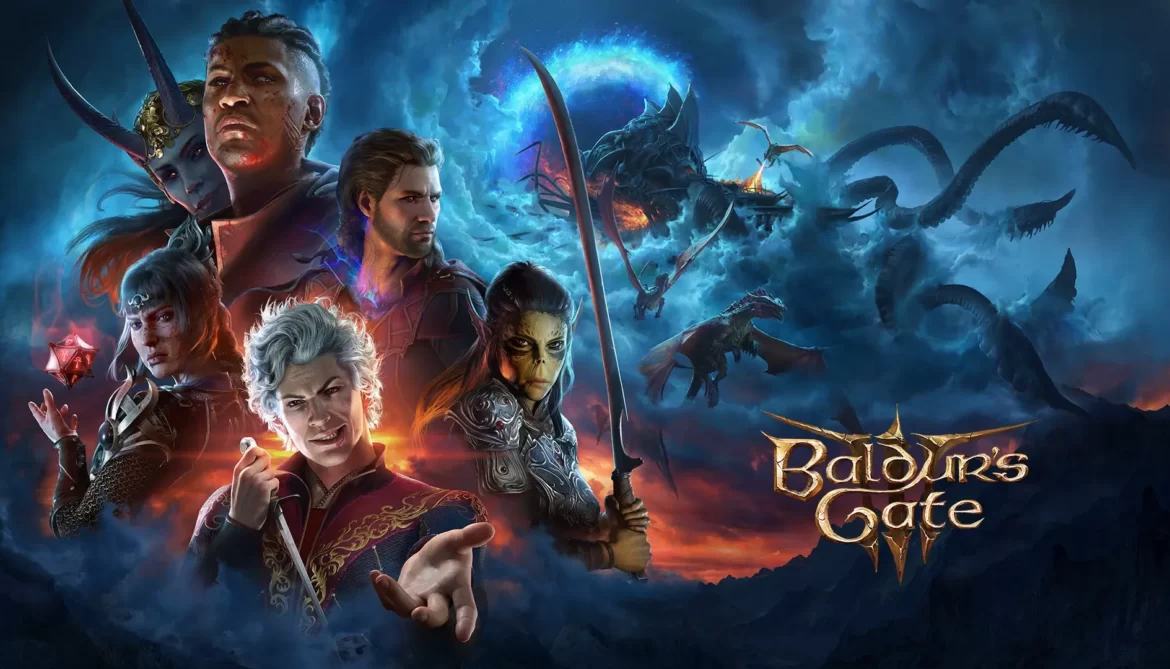Release Date : 3 August 2023
Developer(s) : Larian Studios
Publisher(s) : Larian Studios
Platforms : PC, PS5
More than 20 years after Bioware’s first two Baldur’s Gate games, Larian studio has been given the heavy task of picking up the torch of this video game franchise from the world of Dungeons & Dragons. It’s no surprise that the developers are absolute fans of the table-top RPG from Wizard of the Coast, along with their fellow developers’ work, so they’ve put all their efforts into delivering the most impeccable production possible to prove themselves worthy of this legacy. Having forged a solid track record, notably with Divinity Original Sin 1 & 2, which were undeniable major successes, the studio has now delivered a spectacular Baldur’s Gate 3. The fruit of 6 years of development, including 3 years of early access.
As you’ve probably seen or read everywhere, the game is already a huge success, and has even opened up some interesting debates about the current state of the industry. For our part, we’ve taken the time to enjoy it in depth, even if we can’t hide the urge to play it again at least once or twice. It’s also possible to play co-op with up to 4 players, but unfortunately, we didn’t get a chance to test this feature. So here’s our review after 150 hours of PC play.
A Great Beginning for CRPG?
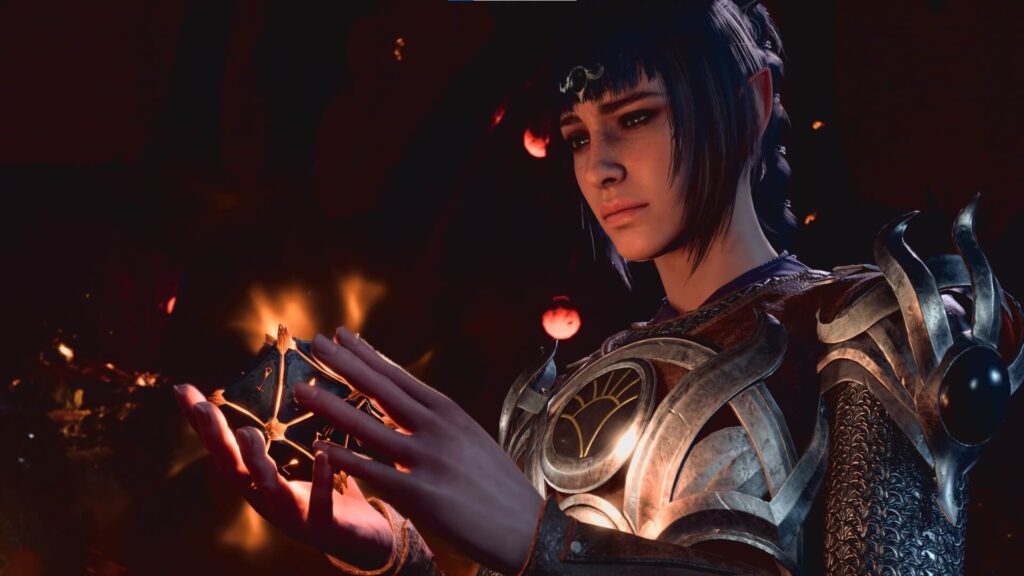
Among the family of RPGs, Baldur’s Gate 3 falls into the category of CRPGs ( Computer Role Playing Game), a genre that stands out for its greater freedom than classic RPGs. The storytelling, the character development, and the choices you make are all decisive. You can explore the world as you see fit, choose to ignore quests and join the bad guys’ ranks, or pursue more selfish ambitions. This means that problems can be solved in different ways, depending on the path(s) you take (diplomacy, intimidation, brute force…).
When you start the game, expect a thrilling adventure packed with drastic choices that are more than just text lines and have real medium- and long-term consequences. This can be intimidating for newcomers to the genre, especially if you haven’t played Larian’s Divinity Original Sin, which has a huge influence on many aspects of this title. However, with a minimum of investment and a little patience, you can easily get the hang of it.
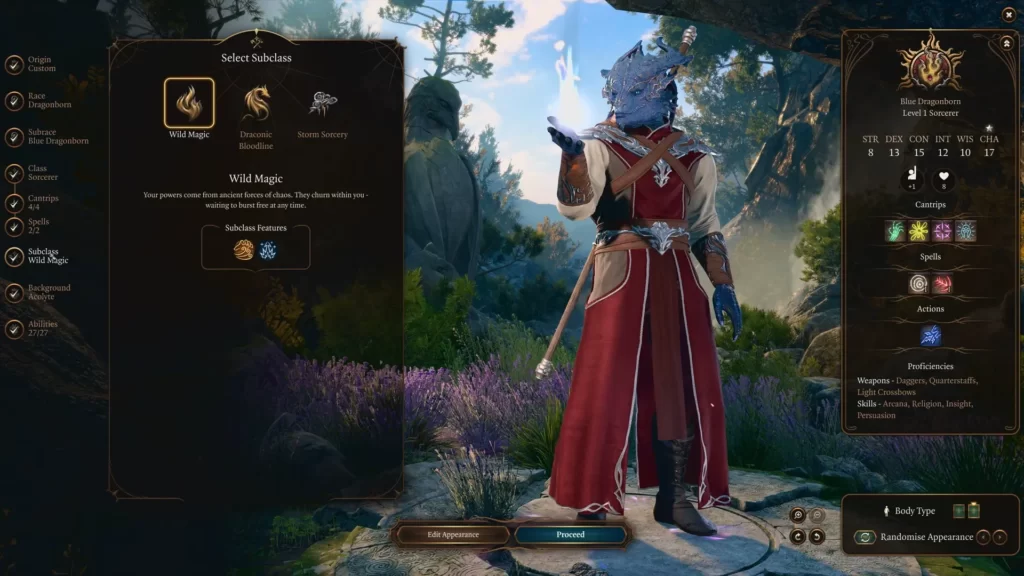
You can play as one of the main characters, or create your own from scratch (appearance, race, class, background…), thanks to useful features like the recommended distribution of character points. Inexperience with the Dungeons & Dragons universe is not an obstacle to enjoying the game either, as there’s simply no need for a game master here. The combat system can be the most complex part to assimilate, but fortunately, every lore term or principle related to combat mechanics is clearly explained. They are highlighted in every text, and all you have to do is press “T” and hover your mouse over them to easily understand the context.
Larian’s development policy also deserves praise. The level of detail, although still improvable so far, is certainly impressive for a game of this scale. The studio also adopts a strict approach to the medium, which is a pleasure to note. There are no Battle Passes, online stores, or other forms of microtransactions. All content is accessible after the initial purchase. However, we regret the absence of any DLC development to extend the experience, even though it is already substantial.
A Gripping Storyline Mastered From A to Z
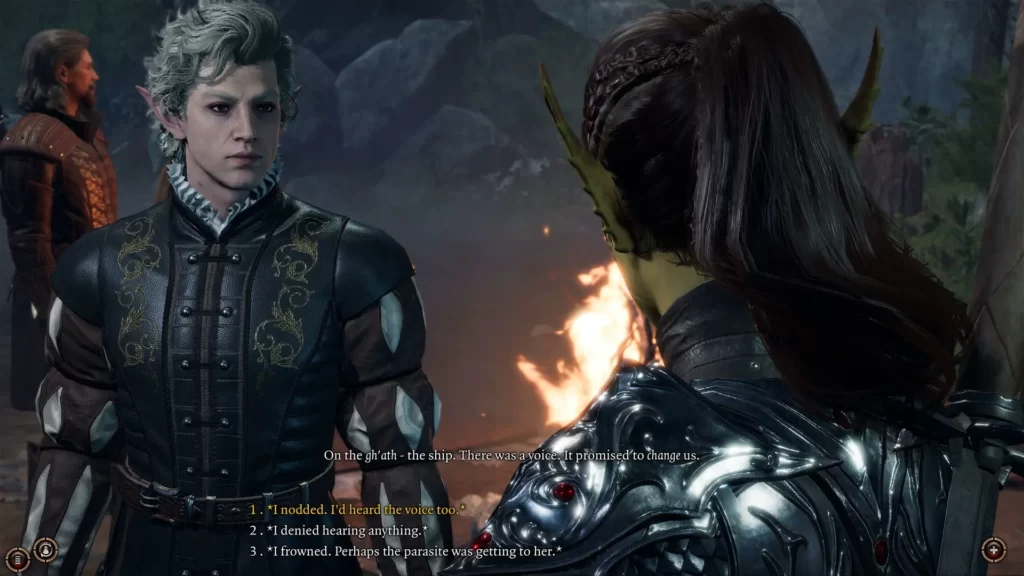
The plot of Baldur’s Gate 3 can’t be summed up in a nutshell, given the numerous stakes involved, the side quests, the different stories of each companion, the various threats, the allies, and so many other story elements. Your adventure begins in one of the Mind Flayers’ ships, targeted by enemies. In the middle of chaos, you manage to break free from your chains, and after the ship crashes, you’re free.
Unfortunately, a crawling larva inside your skull threatens to turn you into a Mind Flayer any moment. Later, you meet other survivors who have undergone the same treatment. Bound together by the common cause of removing these time bombs, you and your companions search for a way to heal yourselves. This journey takes you through 3 acts of rich content, although Act 2 is more of a transition and a little shorter. To give you an idea, it took us around 50 hours to complete Act 1, assuming we’d discovered everything. Act 3 takes you to the magnificent city of Baldur’s Gate, which gives the game its name and is the biggest chunk to digest, while also being the most intense.
Whether it’s the companions or the various quests, the writing is definitely one of the most successful we’ve seen in an RPG. And the best part is that every little adventure feels like it counts, and doesn’t feel like a side quest or just another filler. The content is both extensive and coherent. We find ourselves playing alongside characters from Act 1 through to Act 3 involving major quests. Some quests are even resolved throughout the three acts. The lack of reference points can be frustrating. We’ve sometimes spent hours searching for the solution to a specific quest when we simply had to move on or failed to complete other quests simply due to fruitless research.
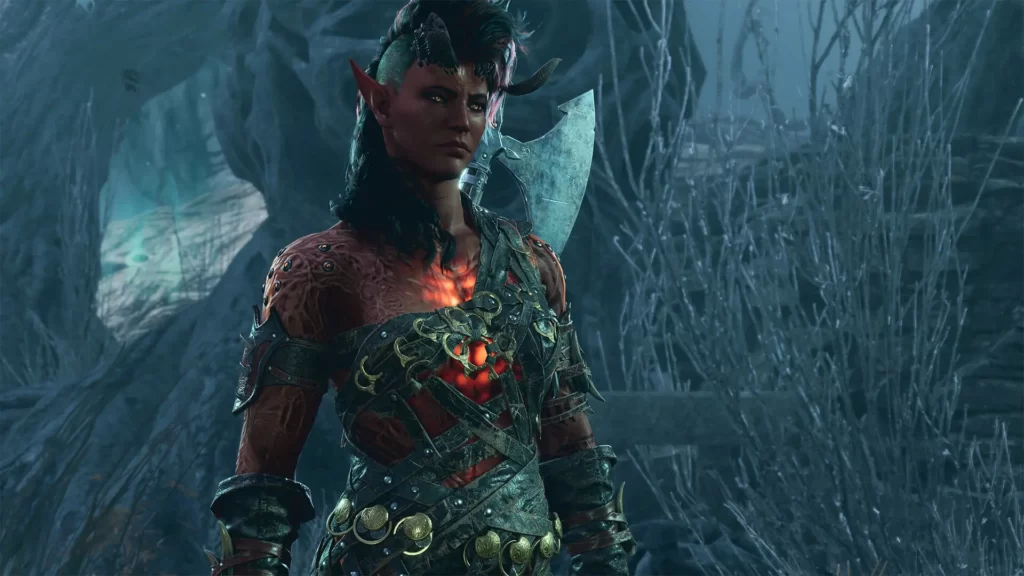
However, the companions are the pinnacle of Larian’s mastery of the pen. It’s a little frustrating that we can’t take them all with us during some of the key scenes from their backgrounds. Like us, you’ll have your own preferences, but each of them has a brilliant personal story to tell, especially as they evolve, for good or bad, according to your choices and your intimate relationships.
Larian manages to surprise us with characters we never thought we’d get so attached to, such as the devilish Karlach. The supporting characters are equally impressive, with some even stealing the spotlight from the main villains, such as the devil Raphael. A special mention goes to the amazing voice actors, both in performance and in the variety of voices, which never give the impression of having been heard elsewhere. The studio had announced 17,000 end variations, and it’s easy to see why after completing the game. And let’s not forget Borislav Slavov’s soundtrack, which contributes significantly to the charm of the entire journey.
Baldur’s Gate 3: Everything Is Possible
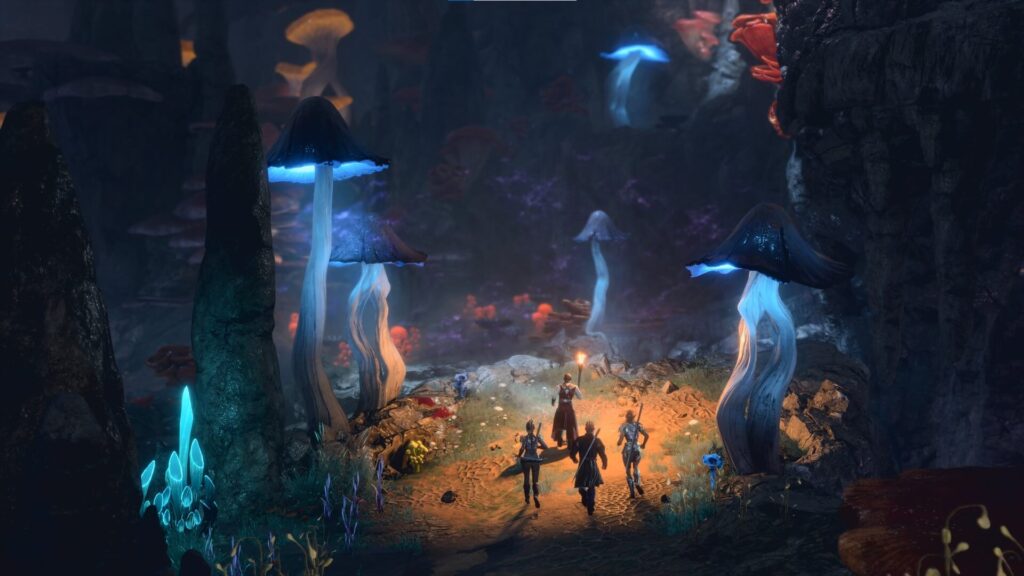
Replayability is also immense, as the major choices are countless. The alliances you forge can completely change the course of the plot, and we actually missed out on an entire plot arc. Frequently, we found ourselves wanting to restart the game to explore other paths. And let’s not forget the character creation, which allows you to embody different races and classes, which will react differently to various situations. Also, your traits and strengths give you different ways of solving problems.
The fluidity and pace of the progression are also noteworthy. You never feel trapped in a pre-established path imposed on you. Even if you often have to search and think to achieve the desired result, it’s always possible to force your way through or solve a problem without even activating the corresponding quest, simply by exploring. The autosave function is almost indispensable to avoid frustration, but by fully immersing yourself, there really are no bad choices or mistakes. Playing the role properly and assuming responsibility for your choices is highly rewarding.
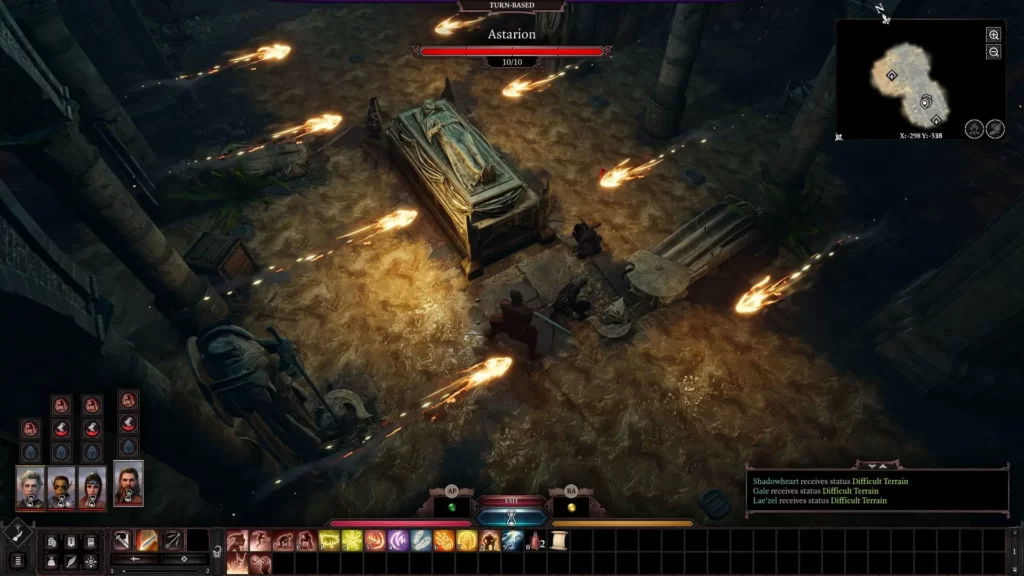
Usually, in a video game, you’re aware of the limitations imposed on you, since most of the time, your path is already laid out, and the developers make sure you follow it, taking each step in one or two possible ways. Baldur’s Gate 3 has the opposite effect, making us realize that anything is possible. Blocking a door with wooden crates to prevent the arrival of reinforcements before launching an attack, buying or stealing the equipment of future opponents to weaken them, discovering that the silence spell is not just for sorceries and can create a dome to kill sleeping enemies without alerting the surrounding area…
These are all examples that leave you amazed, with details that you continue to learn all the way to the game’s ending. If this game shares one quality with the other contender for the title of Game of the Year 2023, The Legend of Zelda: Tears of the Kingdom, it’s its exceptional creative potential. Since the game’s release, the wildest videos have been rolling in, especially when it comes to combat.
Rolling the Dice
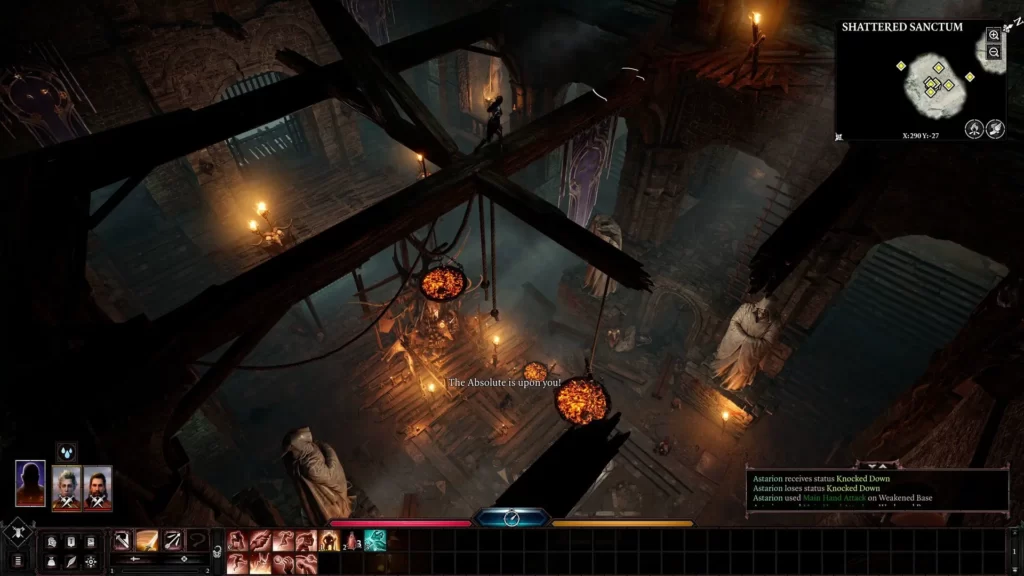
Combat is certainly the most intimidating aspect of the game, as it can often be difficult depending on the situation. Plus, the characters are extremely vulnerable at the beginning of the game. Once again, autosaving becomes your best ally. Larian’s role-play system proves valuable here in particular, forcing us to think constantly about our position, the abilities we’re going to use, and the appropriate equipment. Even in normal difficulty mode, the game doesn’t do you any favors if you’re simply rushing headlong into battle.
There aren’t just one or two winning tactics. Depending on your character classes and your imagination, there can be multiple approaches to victory. The studio has done an excellent job of offering different strategies, thanks to careful level design and numerous interactions with the environment. It must also be said that any location can become a battlefield.
However, for all its qualities, Baldur’s Gate 3 has a few annoying flaws. First of all, the camera tends to behave erratically, and has difficulty managing height differences depending on the position of your group. Yet, surprisingly, this handling is much better when played with a joystick. In 150 hours of play, we encountered only a few serious bugs. The studio has delivered a product in very good condition and well-refined, but a few bugs remain, some of which forced us to reload a save. Since its release, numerous patches have been released, with more on the way.
The Belgian studio’s in-house engine, the Divinity Engine, is as good as the classic Unity or Unreal Engine, with magnificent lighting effects, varied facial expressions, wonderful panoramas, and detailed environments. Although an isometric view is often used for legibility, the game could equally have been played from a third-person perspective (mods already allow this, by the way). Unfortunately, there’s still a lot of optimization work to be done on Act 3, which has a framerate of between 30 and 40 FPS, while the rest of the game runs like a charm at 60 FPS.
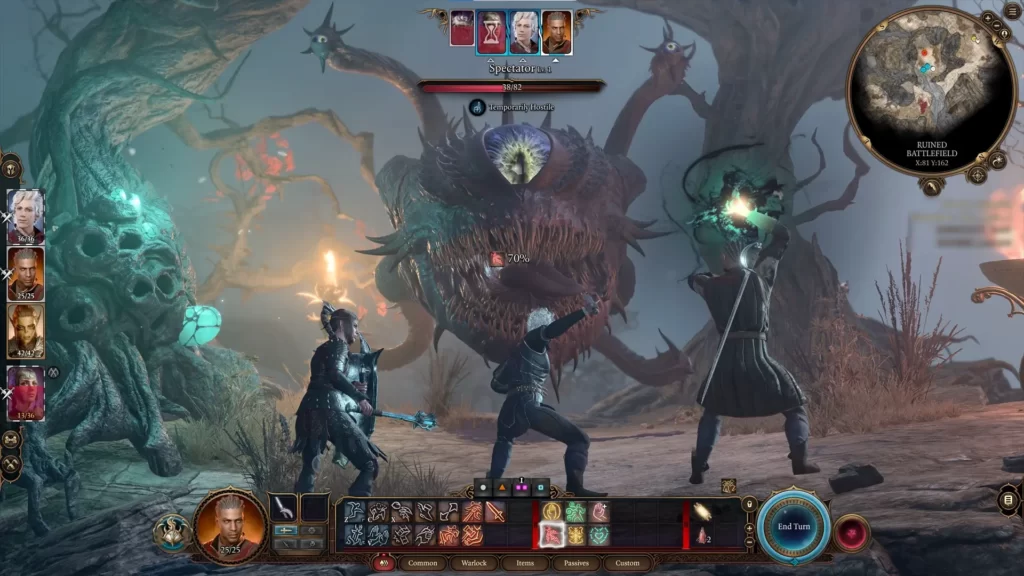
Conclusion
The CRPG isn’t necessarily an easy genre to get into, and can often be quite heavy to enjoy, but with Baldur’s Gate 3, Larian Studio has delivered a real masterpiece that’s hard to let go of once you’ve immersed yourself in its universe. And yet, it goes beyond this point by pushing the role-playing genre even further with high-level refinement. The content is rich, the writing is top-notch on every level, and the possibilities are numerous with truly impactful choices, but it’s not just that. There are no fillers, and every little adventure is equally exciting as the big ones. You always feel like you want more, and every discovery is a new reason to keep going. Without exaggeration, Baldur’s Gate 3 is a true masterpiece. After a few major fixes, it should have only a few remaining glitches.
